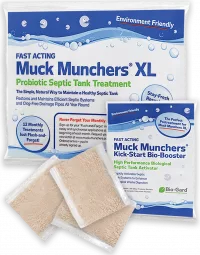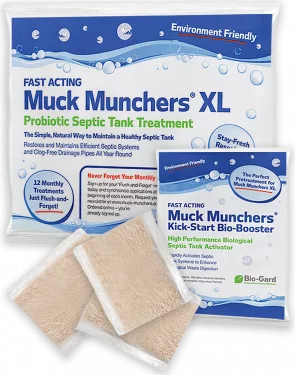What is a Septic Tank & How Does It Work?
If you’ve never come across a septic tank before, the simple reason is you’ve probably not needed one! However, septic tanks are fantastic assets for homes and buildings where public sewerage simply isn’t available. Imagine being able to flush your toilet and not having the pipes to drain everything to the local sewer system. That’s the kind of problem you solve with a septic tank on site!
What if you’ve never used one before? What does a septic tank actually do and what do you need to do to keep everything running efficiently?
In this guide, we will answer the question; what is a septic tank? and take you through the absolute basics when it comes to owning and running a septic tank. We’ll show you how the system works, and we’ll also run through a few pros or cons if you’re looking to get a septic tank of your own of your own.
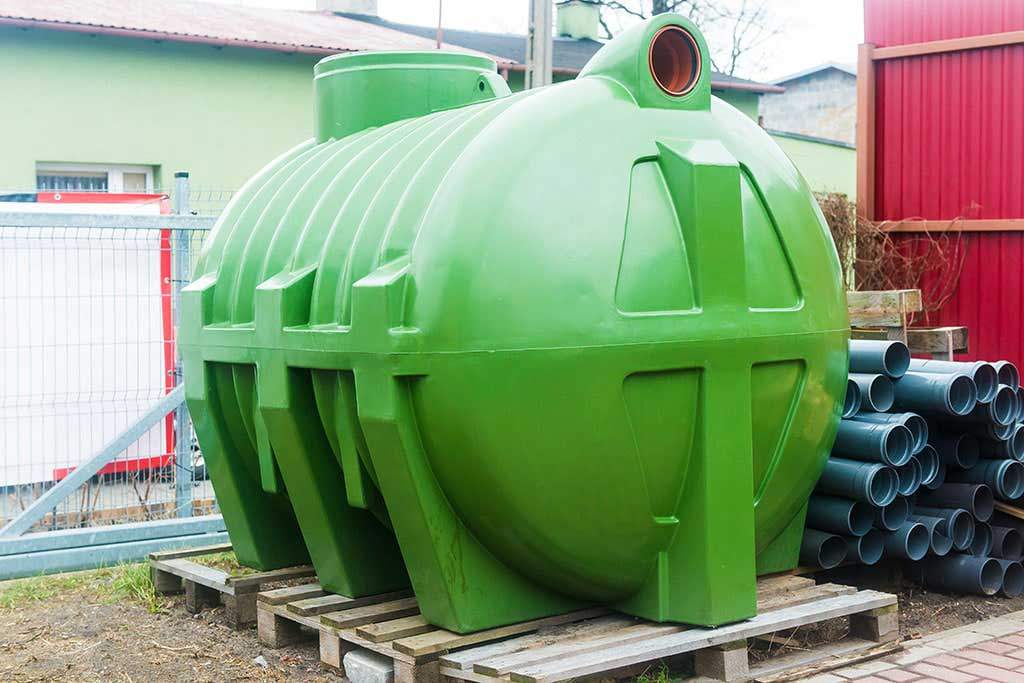
What is a Septic Tank?
A septic tank is an onsite wastewater treatment system (OSWTS) used to break down waste that gets flushed out of a building or property. However, instead of the waste draining into the local sewer system, it collects in this tank or treatment unit, which will normally be underground on your property.
A septic tank system depends on the biological breakdown of organic waste. That’s because there’s no clear way for solids to drain out. Instead, bacteria in the tank gradually eat away the sewage, reducing it to almost nothing, so that you can continue using the tank, flush after flush.
Liquids in the septic tank will drain away through a component known as the soakaway. As this drains out, the effluent mush remains where bacteria can happily munch through it. There are some septic tanks which don’t have soakaways and drain water directly into water courses, such as ditches, streams and rivers. However, such systems are now both outdated and illegal, requiring you to install a soakaway or a unit known as a ‘package sewage treatment plant.
A septic tank is, crucially, an important fixture for any property without a mains sewage connection. However, it doesn’t cause a stink on-site as it’s sunk into the ground, providing you take just a little care.
What are the Pros and Cons of a Septic Tank?
There are plenty of advantages, as well as disadvantages, to owning and running a septic tank.
Septic Tank Pros
The positives can be fairly obvious. For one, owning a septic tank means you don’t have to pay premiums to the local water board for a sewer connection. If you’re connected to mains sewers, you’d be surprised as to how much this actually costs – in fact, you talking paying around double what a septic tank owner pays.
What’s more, owning a septic tank can actually be environmentally friendly. With an effective soakaway, you’re not transferring waste into the local water courses. A soakaway merely transfers the treated wastewater into the ground. What’s more, using a septic tank as opposed to public sewerage means you create less pollution – you’re lessening your carbon footprint, because the energy costs in processing mains sewage are enormous.
You’ll also likely start using your toilets and sinks more responsibly, too – as anything that’s not compatible, such environmental harmful chlorine-based products can cause you serious septic tank problems.
Septic Tank Cons
And now, the disadvantages. Right off the bat, the disadvantage for many people is that a septic tank requires maintenance and care. Otherwise, you are running the risk of sewage leaking into your back garden. Not pleasant!
Regular maintenance may be as easy as topping up with bacteria monthly and checking sludge levels regularly, say once every 6 months. However, if you let things go to seed, you may need to pump-out your tank. The average tank will need pumping every 1-2 years. However, if you maintain your septic tank properly you can decrease the amount of pump-outs, well beyond that, reducing unnecessary costs.
You may also find that if you don’t properly maintain your septic tank you may have to deal with blocked sinks and toilets. This is because septic systems can be sensitive. Flush anything other than pee, poo or toilet paper and you’re in ‘dangerous waters’ (pardon the pun)!
Of course, the last real drawback is – no one really enjoys dealing with raw sewage! However, providing you look after your septic tank, taking a little care, there’s no reason why you can’t avoid having to deal with the really mucky side of things – because there won’t be any.
An Introduction to Your Septic System
We talk about a septic system in more detail on our website, but, let’s take a brief look at how your septic tank works on its own, and how it connects up.
Ultimately, your septic tank will have multiple chambers, with three main effluent layers – the scum layer, which is mainly composite oil, fats and greases (known as FOG) at the top; the fluid wastewater layer, in the middle; the sludge layer, which is more solid and compact at the bottom. There are two main pipes in your septic tank – one to let the wastewater into the tank, and another to let treated purer, cleaner water drain out to the soakaway.
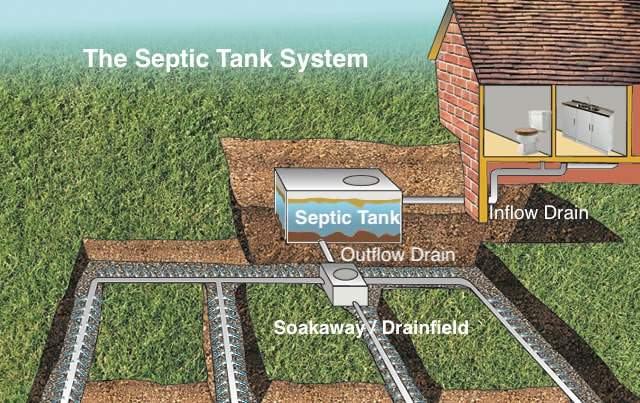
Essentially, when you drain wastewater into your septic tank, it allows solid waste to settle into sludge at the bottom of the tank. Oils rise to the top, and water drains away through soakaway. As the water drains into the soil or ground, the bacteria filters away.
However, you will need bacteria in your tank to keep the sludge low. That’s because without bacteria, waste doesn’t degrade. Providing you offer your septic tank plenty of air through flushing, and make sure not to use chemicals that are likely to kill them off, you’ll find that bacteria can naturally occur on their own.
However, that’s where Muck Munchers comes in. There are some cases, regularly, where you will need to top up your bacteria population. We’ll come to this a little further down.
How to Maintain Your Septic Tank
The best way to maintain your septic tank is to simply ensure that your bacteria’s living conditions are absolutely perfect. Just as you and I need air, food and water to live, so do bacteria – and if they’re not getting enough of them is suitable quantities, they’re going to become unhealthy or die.
The best thing you can do is be responsible about how you actually use your septic tank. Many people assume that you’re going to need to flush or pump it out regularly. This really isn’t the case – it’s going to be down to what you flush, when you flush it, how much you flush and how often you top it up with bacteria.
Using your septic tank responsibly means more than just cutting back on baby wipes. It means avoiding anything that contains contaminating chemicals.
There are non-hazardous chemical alternatives for toilet cleaners that can help in this regard. But don’t feel too guilty if you find you have sanitise surfaces with the odd bit of chlorine bleach. We need to stay healthy ourselves, of course, but more advisable would be to use a hydrogen peroxide-based bleach.
Regular inspections are also a practical idea. Rather than just letting your septic tank persist on its own for time on end, take a little time to actually measure the sludge level. You’re always going to have sludge in your tank to some extent, though that more or less depends on how often or how heavily you actually use your septic tank and how you manage it.
Try and make sure your tank is no more than 30% sludge (measured to top of the liquid in the tank), or you’re asking for trouble. That’s when you’re at risk of the nasty stuff flowing-out and causing both headaches and potential soakaway problems.
The best way to measure sludge levels is to use something akin to a dipstick to measure the depth. We go into more detail on this in our What is Septic Sludge blog, but crucially, you should use a long wooden pole or rod that you can measure or mark off. This will be easy enough for you to just ‘dip’ into your tank, and you won’t have to risk getting too dirty in the process.
Why is Maintaining a Septic Tank Important?
Maintaining your septic tank is important not only for your health but also for the fact that pumping and draining will cost you a lot of money in the long run. The more often you let your septic sludge build-up, the more frequently you are going to need to call in an expert to get your tank pumped out. That’s not only a hassle, but it’s hundreds of pounds, again and again, when you could just keep a closer eye on your tank and add in a bit more bacteria.
Do you like the thought of wastewater and toilet sludge going everywhere? If your septic tank isn’t maintained, it’s going to cause a health hazard. That means you should probably get your tank an inspection every so often, too – and not wait until your tank or soakaway starts showing signs of a slowdown.
The maintenance required with a septic tank doesn’t have to be that big a hassle. Some people believe that it’s more trouble than it’s worth, but we have to disagree. The benefits far outweigh the drawbacks, and it’s more a case of being proactive than it is having to ‘dig deep’ or do anything too grim.
A poor septic tank blocks everything up regularly and causes the mother of all smells. Trust us, you will know when your tank isn’t well maintained. Therefore, cut these problems off at the pass and make sure to take genuine care of your own system.
What are Muck Munchers?
Muck Munchers are going to be your new best friends as far as septic tank maintenance is concerned. While it’s easy enough for us to say ‘top up with bacteria’, it’s not always so obvious how you actually go about that. Sure, all things you flush will have bacteria in to an extent, but it might not always be the most efficient at really breaking down through all of that waste and sludge.
Muck Munchers are scientifically researched and formulated to cut through the waste in your septic tank in a natural, efficient way. These microbial marvels work to an enzyme system specially designed to cut through the natural waste and debris that your septic tank is likely to build up with overtime.
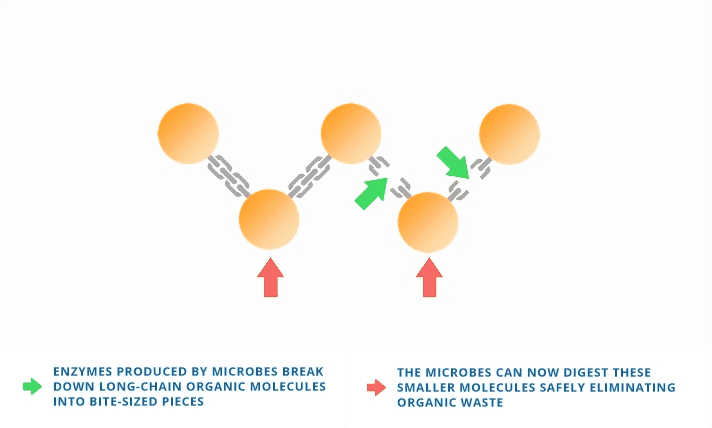
Essentially, introducing Muck Munchers to your tank means you are giving the environment a bit of a boost when it comes to actively breaking down sludge and all the nastiness of the crust. Even if you’ve purely been suffering with bad smells from your tank in recent times, you’re likely going to benefit from microbes that work to break down the worst of the contents.
By making sure you flush the right stuff into your septic tank and by ensuring that the septic tank is always topped up with a healthy dose of microbial action, there are no reasons why you won’t be able to maintain a healthy, top-performing septic tank for years to come. Muck Muncher customers agree, that it costs much, much less to invest in regular microbes than to regularly have their septic tank pumped out.
Conclusion
The septic tank is a surprisingly complex creation, for a contraption that many believe to be a sludge pit in the ground. The fact is, septic tanks work amazingly hard for homes and businesses, and while it’s probably tempting to leave them to their own devices, it’s never a healthy idea.
Whether you are inheriting a septic tank at your new home or are considering installing one outright, we hope this guide has helped to break down (pun intended) some of the bigger questions about owning septic supports for your home or commercial premises.
If you’d like to know more about the septic system or how Muck Munchers can help you keep your tank working healthily for the years ahead, be sure to take a look at our wider septic guides for more details.
